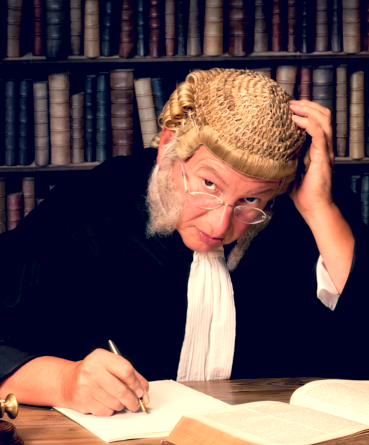- UNITS
- Unit 10 - The Roots of Common Law
- The Game of Words
- Prof. Quinn and Paul's Conversation
- Eloquence
- Latin Phrases
- Language Knots
- Test Corner
- LEARNING

♦ This introductory exercise aims to give you a feel for the sound and rhythm of the language, whilst presenting an overview of the maritime topic at hand. ♦ By reading and then listening to the accompanying audio, you’ll discover how words are pronounced and some simple sentence structures. ♦ Once you are comfortable with how the written and spoken words are connected, you’ll be ready to focus on keywords in the next exercise.
The Roots of Common Law
Common law is the second path in the development of legal systems. More than civil law, it can be seen as an accumulative system: laws are based on the previous interpretations and decisions within cases.
Legal precedent is derived from the verb ‘to precede’, meaning ‘to go before’. So common law is that which is based on went before – past decisions.
If the civil law system is based on a comprehensive body of law, the common law system is more of a functioning of law. Practicing common law is to resolve legal conflicts in a way that is consistent and in accordance with earlier decisions. Often a case will fall between several precedents in earlier rulings, in which case it falls to the common law judge to select and combine earlier precedent as best fits the case. Therefore in common law, the judge’s role becomes more important.
In civil law judges are administrative enforcers of the legal code, in common law systems they are the interpreters, modernisers, and effective creators of the law.
Common law is generally uncodified, meaning there can be no comprehensive compilation of legal codes and statutes. Instead, common law is based on past case rulings, legislative decisions, and even formal customs. This body of precedential knowledge is maintained in court records and collections of case law known as yearbooks and reports.
Finally, common law is a system of adversaries. A legal case is therefore conducted as a conflict of two parties before a judge who moderates between these forces. In some courts there will be juries, a group of ordinary, untrained citizens who decide on the facts of the case with the part-educational support of the judge. After the jury decides the case, the judge then defines the appropriate sentence.
English common law first developed out of the centralisation of power to the king through the Middle Ages, followed the Norman Conquest of 1066. Laws were then formed by the crown through a system of royal orders, also called writs. The role of the courts was then to best apply the royal orders to the specific case at hand. In the event of disagreement, appeals would then be brought to the king directly. This was inefficient and placed a large and inconvenient burden on the king’s time, so the Court of the Chancery was formed, run by the Lord Chancellor.
This was a ‘Court of Equity’ that would apply legal principles from Roman or Natural law to achieve a just outcome. This evolved over time and helped shape the common law system to include High / Supreme / Appeal Courts where the law could be formed as much as it was delivered.
Common law originated in England in the Middle Ages and was then exported across countries of the British Commonwealth including the USA. Common law is the dominant legal tradition in 49 of the US States and nine of the Canadian Provinces.
